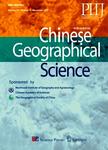Effect of Aspect on Climate Variation in Mountain Ranges of Shennongjia Massif, Central China
Effect of Aspect on Climate Variation in Mountain Ranges of Shennongjia Massif, Central China作者机构:School of Earth Sciences China University of Geosciences The College of Urban & Environmental Sciences Central China Normal University
出 版 物:《Chinese Geographical Science》 (中国地理科学(英文版))
年 卷 期:2018年第28卷第1期
页 面:74-85页
核心收录:
学科分类:0303[法学-社会学] 07[理学] 070601[理学-气象学] 0708[理学-地球物理学] 09[农学] 0705[理学-地理学] 0903[农学-农业资源与环境] 0706[理学-大气科学] 0813[工学-建筑学] 0704[理学-天文学] 0833[工学-城乡规划学] 0713[理学-生态学]
基 金:Under the auspices of National Natural Science Foundation of China(No.41371216) Natural Science Foundation of Hubei Province(No.2014CFB376)
主 题:regional climate variation slope aspect Shennongjia Massif One-way ANOVA global climate change
摘 要:The aim of this study was to better understand the mechanisms of regional climate variation in mountain ranges with contrasting aspects as mediated by changes in global climate. It may help predict trends of vegetation variations in native ecosystems in natural reserves. As measures of climate response, temperature and precipitation data from the north, east, and south-facing mountain ranges of Shennongjia Massif in the coldest and hottest months(January and July), different seasons(spring, summer, autumn, and winter) and each year were analyzed from a long-term dataset(1960 to 2003) to tested variations characteristics, temporal and spatial quantitative relationships of climates. The results showed that the average seasonal temperatures and precipitation in the north, east, and south aspects of the mountain ranges changed at different rates. The average seasonal temperatures change rate ranges in the north, east, and south-facing mountain ranges were from –0.0210℃/yr to 0.0143℃/yr, –0.0166℃/yr to 0.0311℃/yr, and –0.0290 ℃/yr to 0.0084℃/yr, respectively, and seasonal precipitation variation magnitude were from –1.4940 mm/yr to 0.6217 mm/yr, –1.6833 mm/yr to 2.6182 mm/yr, and –0.8567 mm/yr to 1.4077 mm/yr, respectively. The climates variation trend among the three mountain ranges were different in magnitude and direction, showing a complicated change of the climates in mountain ranges and some inconsistency with general trends in global climate change. The climate variations were significantly different and positively correlated cross mountain ranges, revealing that aspects significantly affected on climate variations and these variations resulted from a larger air circulation system, which were sensitive to global climate change. We conclude that location and terrain of aspect are the main factors affecting differences in climate variation among the mountain ranges with contrasting aspects.



